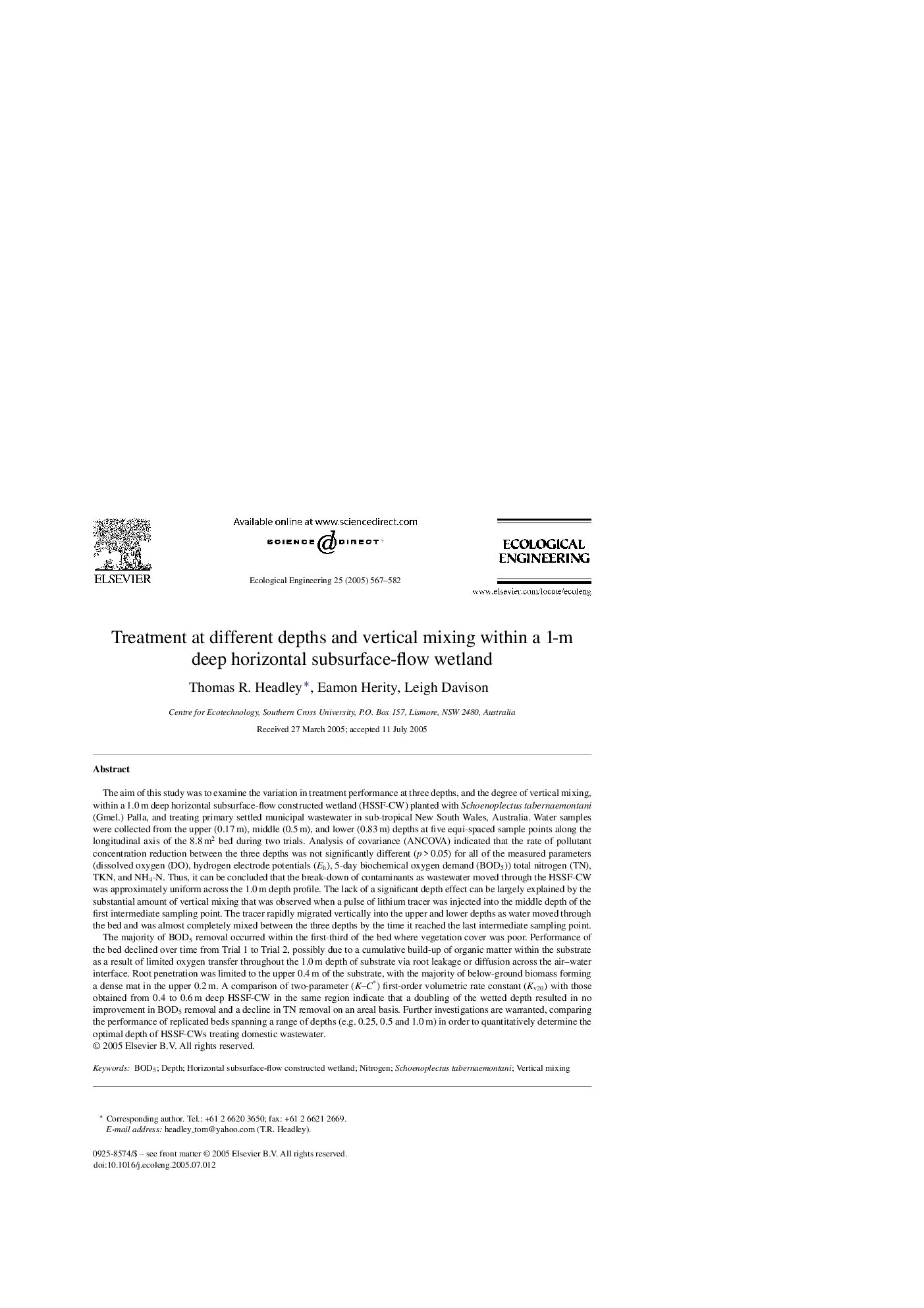| Article ID | Journal | Published Year | Pages | File Type |
|---|---|---|---|---|
| 9447515 | Ecological Engineering | 2005 | 16 Pages |
Abstract
The majority of BOD5 removal occurred within the first-third of the bed where vegetation cover was poor. Performance of the bed declined over time from Trial 1 to Trial 2, possibly due to a cumulative build-up of organic matter within the substrate as a result of limited oxygen transfer throughout the 1.0Â m depth of substrate via root leakage or diffusion across the air-water interface. Root penetration was limited to the upper 0.4Â m of the substrate, with the majority of below-ground biomass forming a dense mat in the upper 0.2Â m. A comparison of two-parameter (K-C*) first-order volumetric rate constant (Kv20) with those obtained from 0.4 to 0.6Â m deep HSSF-CW in the same region indicate that a doubling of the wetted depth resulted in no improvement in BOD5 removal and a decline in TN removal on an areal basis. Further investigations are warranted, comparing the performance of replicated beds spanning a range of depths (e.g. 0.25, 0.5 and 1.0Â m) in order to quantitatively determine the optimal depth of HSSF-CWs treating domestic wastewater.
Related Topics
Life Sciences
Agricultural and Biological Sciences
Ecology, Evolution, Behavior and Systematics
Authors
Thomas R. Headley, Eamon Herity, Leigh Davison,
